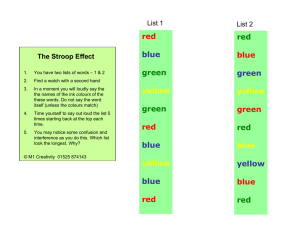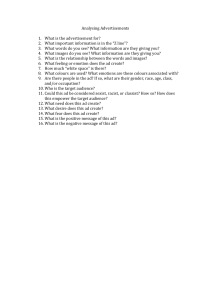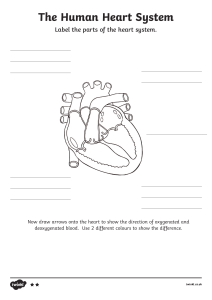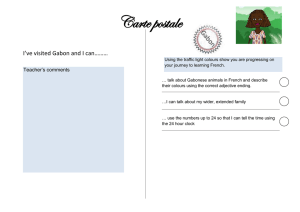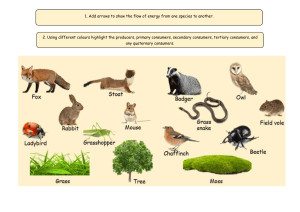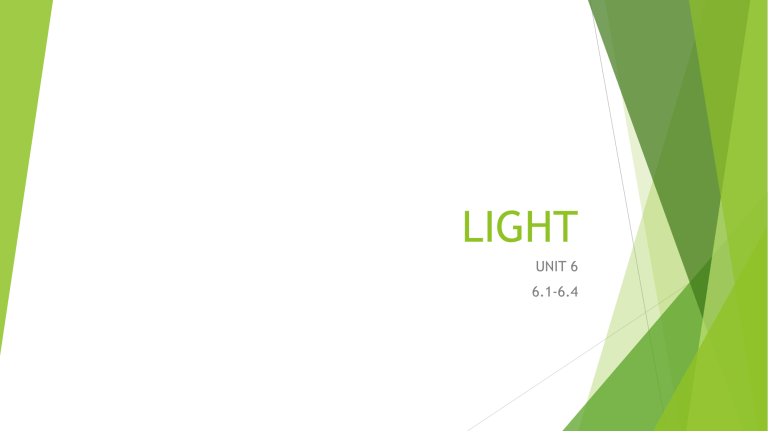
LIGHT UNIT 6 6.1-6.4 RAY DIAGRAMS Angles are measured between the wave direction (ray) and a line at 90 degrees to the boundary o The line at right angles (90°) to the boundary is known as the normal o The angle of the wave approaching the boundary is called the angle of incidence (i) o The angle of the wave leaving the boundary is called the angle of reflection (r) When drawing a ray diagram an arrow is used to show the direction the wave is travelling o An incident ray has an arrow pointing towards the boundary o A reflected ray has an arrow pointing away from the boundary The angles of incidence and reflection are usually labelled i and r respectively THE LAW OF REFLECTION The law of reflection states that these angles are the same: Angle of incidence (i) = Angle of reflection (r) REFLECTION IN A PLANE MIRROR A plane mirror refers to a flat surface. When light rays fall on a mirror, they form an image. The formation of an image can be understood by using a ray diagram. REFRACTION OF LIGHT Refraction occurs when light passes a boundary between two different transparent media At the boundary, the rays of light undergo a change in direction The direction is taken as the angle from a hypothetical line called the normal This line is perpendicular to the surface of the boundaries and is usually represented by a straight dashed or dotted line When drawing a ray diagram an arrow is used to show the direction the wave is travelling An incident ray has an arrow pointing towards the boundary A refracted ray has an arrow pointing away from the boundary The angles of incidence and refraction are usually labelled i and r respectively SHOWING REFRACTION The change in direction depends on which media the light rays pass between: From less dense to more dense (e.g air to glass), light bends towards the normal From more dense to less dense (e.g. glass to air), light bends away from the normal When passing along the normal (perpendicular) the light does not bend at all DISPERSION OF LIGHT White light is a mixture of all the colours of the spectrum White light may be separated into all its colours by passing it through a triangular prism This is done by refraction Violet light is refracted the most, whilst red light is refracted the least This splits up the colours to form a spectrum. This process is similar to how a rainbow is created DISPERSION: The splitting of light into different colours This is the order the colours appear in a spectrum PRIMARY COLOURS Primary colours are those which cannot be made by mixing other colours of light. The primary colours are red, green and blue Red + green= yellow Red + blue= magenta Blue + green= cyan Red + blue + green= white Every colour other colours are made from a mixture of the primary colours. Changing the brightness of the primary colours makes colours other than yellow, cyan, magenta and blue NON-LUMINOUS OBJECTS Non-luminous objects are those that don’t emit its own light. A yellow object only looks yellow because it reflects only yellow light, however it absorbs all the other 6 colourd A black object absorbs all the light in white light but does not reflect any A white object reflects all the colours in white light equally
